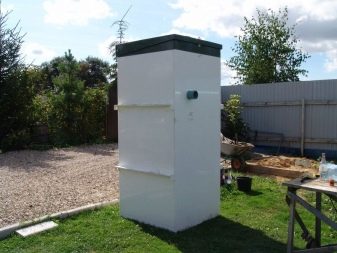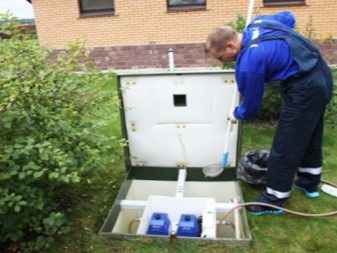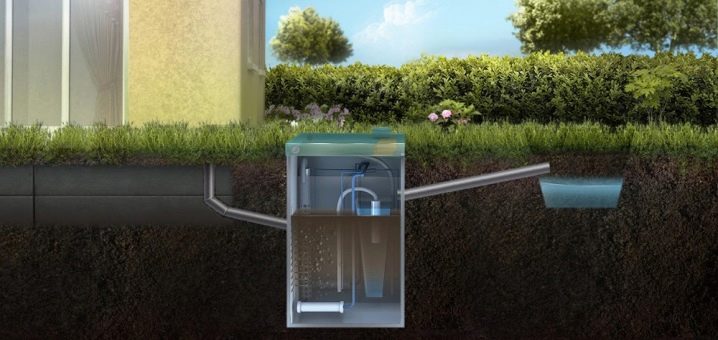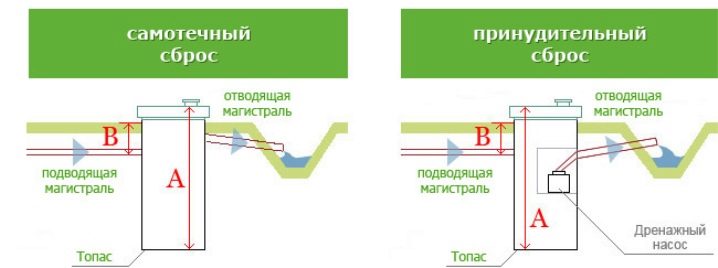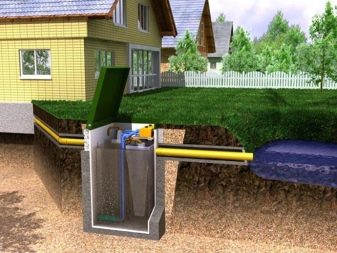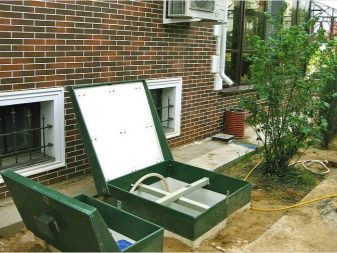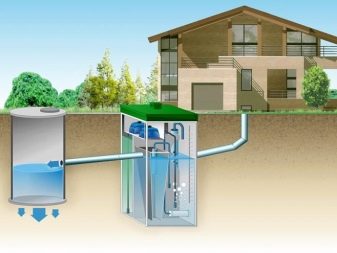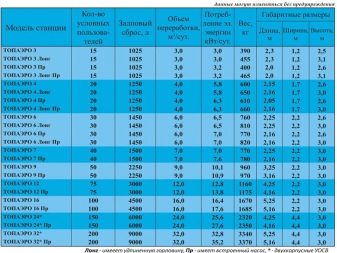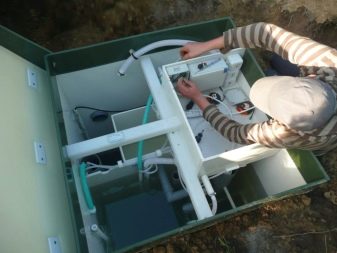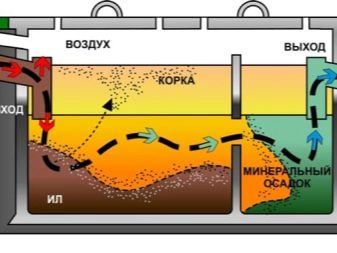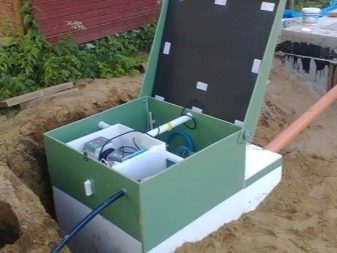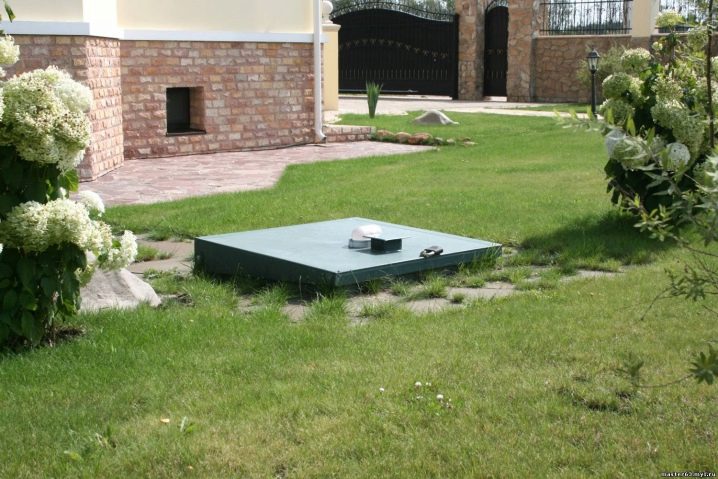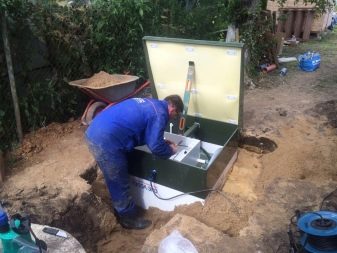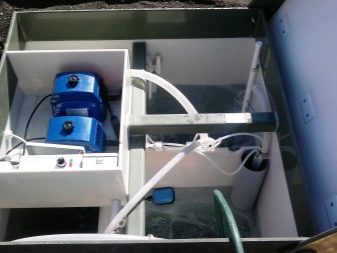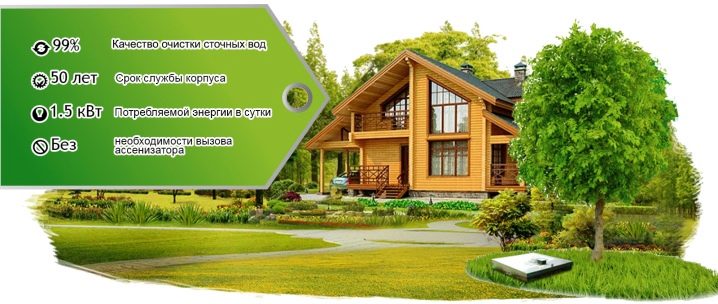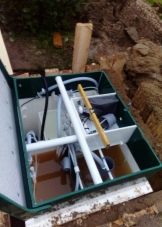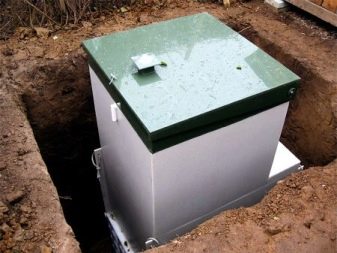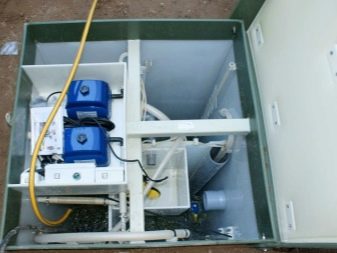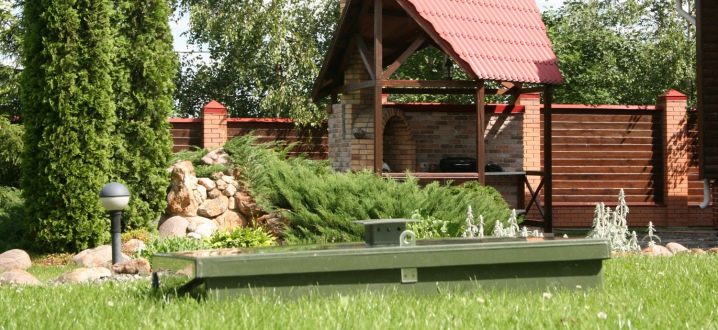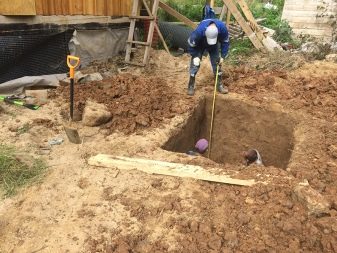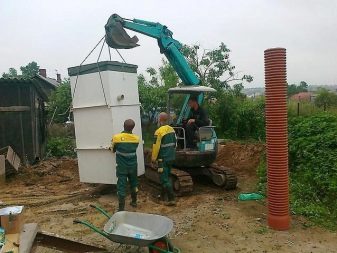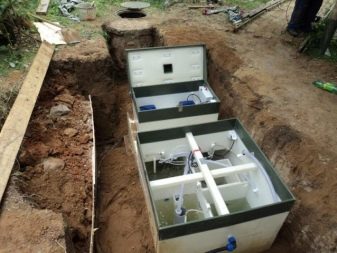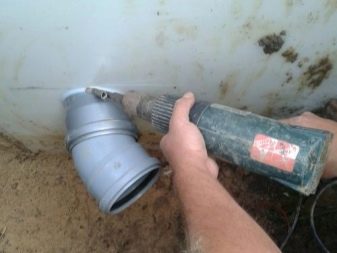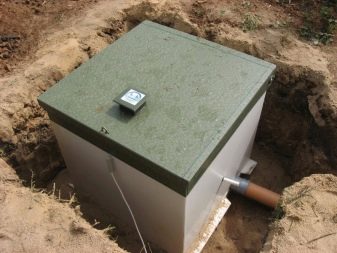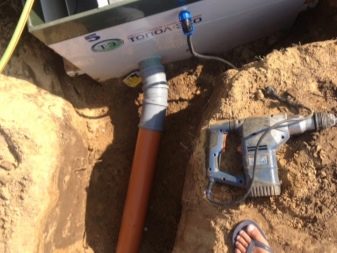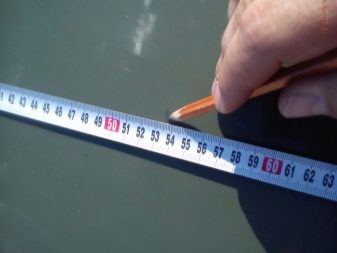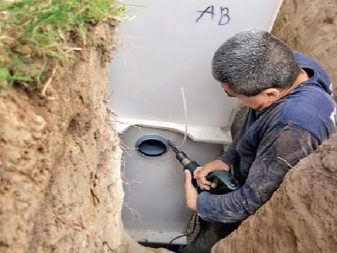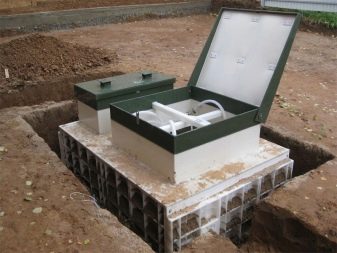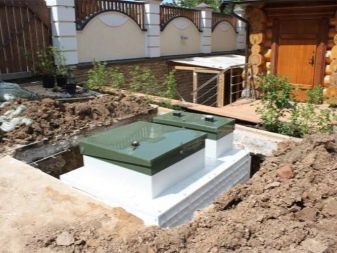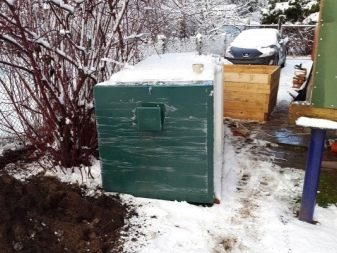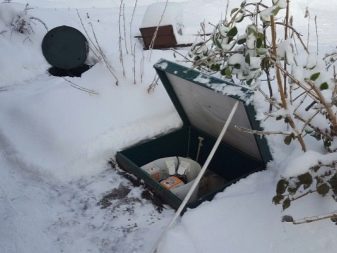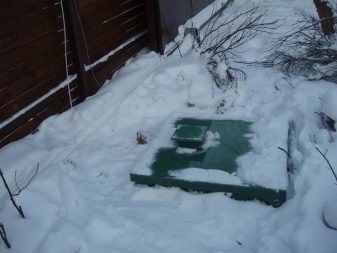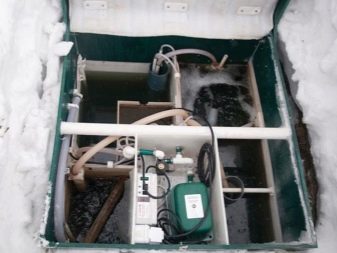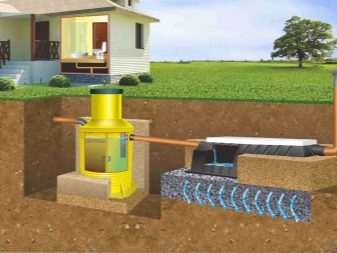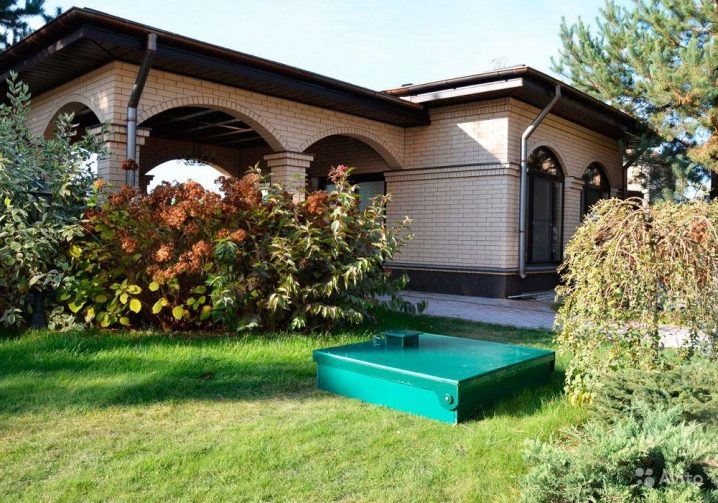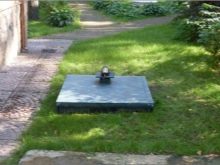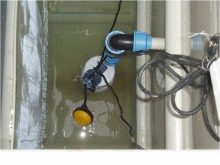Advantages and disadvantages of septic tanks "Topas"
At a certain stage of the design or redevelopment of a suburban area, every homeowner must face the question of setting up a sewage system. Increasingly, preference is given to modern wastewater treatment plants - the so-called septic tanks.
Special features
A septic tank is a sewage system specially designed for the local treatment of domestic and household wastewater. The sewage mass at the same time is cleared to 98% and turns into usual water. It is impossible to consume such water, but it can be used on the premises, for example, for irrigation: it is absolutely safe and does not have an unpleasant smell.
In terms of price and quality, the TOPAS wastewater treatment plant has proven itself well.
The manufacturer, PO PO TOPOL-EKO, guarantees the safety of the device, its tightness, durability and long service life.
The device septic depends on the method of discharge of biologically purified water.
According to the method of drainage, septic tanks are of two types:
- with gravity lead;
- with forced abduction.
The main elements of the concept of installation of any septic tank are necessarily:
- receiving chamber;
- aerotank chamber;
- secondary settling tank;
- sludge tank or stabilizer;
- 1-2 options for entering the wastewater installation.
Further, depending on the type of septic tank:
- septic tanks with gravity drainage have an outlet for the discharge of biologically purified waste water from the installation;
- in septic tanks with forced drainage, a storage tank is provided for installing pumping equipment with subsequent release of biologically treated wastewater to either side of the installation.
Technical characteristics of septic tanks of the TOPAS brand depend on the model and are presented in the table.
Model | How many people is designed | Volley dump, l | Volume of processing, m3 / day | Power consumption, kW / day | Weight, kg | Dimensions / Length * Width * Height, m |
TOPAS-4 | 4 | 175 | 0,8 | 1,5 | 210 | 0,95*0,95*2,5 |
TOPAS-5 | 5 | 220 | 1 | 1,5 | 250 | 1,2*1,2*2,5 |
TOPAS-6 | 6 | 250 | 1,15 | 1,5 | 260 | 1,2*1,2*2,55 |
TOPAS-8 | 8 | 440 | 1,5 | 1,5 | 320 | 1,6*1,2*2,5 |
TOPAS-9 | 9 | 510 | 1,7 | 1,5 | 330 | 1,6*1,2*2,55 |
TOPAS -10 | 10 | 760 | 2 | 2 | 425 | 2,1*1,2*2,5 |
TOPAS-12 | 12 | 830 | 2,2 | 2 | 435 | 2,1*1,2*2,55 |
TOPAS-15 | 15 | 850 | 3 | 2,9 | 445 | 2,1*1,2*2,5 |
TOPAS -20 | 20 | 1000 | 4 | 2,9 | 655 | 2,3*1,7*2,6 |
TOPAS-30 | 30 | 1200 | 6 | 3,6 | 790 | 2,3*2,2*2,6 |
TOPAS-40 | 40 | 1300 | 7 | 5,8 | 915 | 2,3*2,2*3,1 |
TOPAS-50 | 50 | 1500 | 9 | 7,2 | 1170 | 3,3*2,2*3,1 |
TOPAS-75 | 75 | 2250 | 12 | 10,8 | 1545 | 4,3*2,2*3,1 |
TOPAS-100 | 100 | 3000 | 16 | 14,4 | 2080 | 3,3*4,4*3,1 |
TOPAS-150 | 150 | 4500 | 24 | 21,6 | 3085 | 4,2*4,4*3,1 |
Principle of operation
A modern septic tank is an installation for the purification of sewage. It does not accumulate household wastewater - they are cleaned in it. The functioning of the septic tank "TOPAS" is based on the biological purification of wastewater, combined with the oxidation of their components through a fine-bubble aeration. In the process of biological treatment, organic substances are destroyed by special microorganisms.
At the same time, wastewater loses its ability to rot, becomes transparent, decreases the rate of bacterial contamination.
The operation of the septic tank is quite simple.
- Through the sewer pipe, wastewater flows from the building into the septic tank's receiving chamber, in which the mechanical sewage treatment and their biological oxidation occur simultaneously.
- From the receiving chamber, the effluent is gradually pumped into the aeration tank. The aerotank contains activated sludge, which oxidizes organic compounds and finally destroys them. Activated sludge is a suspension consisting of pure water and active biomass and performing wastewater treatment in aerobic biological oxidants.
- Suspension from pure water and activated sludge enters a secondary settling tank, in which activated sludge is separated from pure water. Clean water alone or forcibly, depending on the modification of the septic tank, is removed from the installation.
Advantages and disadvantages
Of course, when choosing a septic tank for a dacha or a country house, every homeowner necessarily weighs all the advantages and disadvantages, reads feedback from owners of various systems on the network. Like any cleaning system, the septic tank "TOPAS" has its drawbacks, but you can easily cope with them yourself.
It would seem, but the system has a number of obvious flaws.
- The need for regular maintenance. Indeed, it is necessary to maintain a septic tank at least twice a year. But this process is so simple that it does not take much time and can be performed on its own without the involvement of specialists, special equipment and, accordingly, without monetary costs.
- The septic tank must be permanently connected to the mains. Yes it is. But the cost of electricity is low and, of course, not comparable with the benefits that this installation brings.
- Problems with a sudden power outage.The problem is solved by simple installation of an uninterruptible power supply.
- Active bacteria can die when using disinfectants. They can, but the fact is that the system is designed in such a way that disinfection is not required - there will simply be no unpleasant odors. This, by the way, is one of the advantages of this model.
- The volume of salvo discharge is limited. Yes, each model has a certain amount of flow, prescribed in the technical passport, and merging more at a time is prohibited by the manufacturer. The problem is solved with the purchase: the model is purchased with a “margin”, and then not only is the big wash not terrible, but the arrival of guests will not cause problems.
- To drain the purified water need a place. Lots of solutions to the problem: a pit of rubble, an after-treatment station, the nearest gutter. Moreover, the output is technical water, that is, it can be used for any household needs: watering lawns and garden beds, washing cars — anything but food. The water is clear and odorless.
The advantages of TOPAS over other similar systems are obvious:
- a wide range of models allows you to find "their" modification;
- simple installation (using the manufacturer's instructions, it will not be difficult to install a septic tank on your own);
- The manufacturer gives an official guarantee for the strength and durability of the system.
Septic tanks "TOPAS" are used in different countries for over 20 years. Despite the shortcomings, the demand for this model does not fall. And these facts prove the reliability of septic tanks "TOPAS". This is confirmed by numerous reviews of the owners.
Owners of the installation distinguish such qualities of a cleaning system as:
- the convenience of use;
- ease of use;
- the design withstands any ground pressure;
- impossibility of ascent of the structure;
- long service life with proper maintenance;
- possibility of installation in any soil and in any climatic zone;
- strength and tightness of the case;
- environmental friendliness of water at the outlet;
- no unpleasant odors;
- noiseless operation
The lineup
On the market, septic tanks "TOPAS" are presented in a wide range. It is necessary to be guided at the choice on the number of potential users. Each model in the name contains a number, for example, TOPAS-5 or TOPAS-15.This number indicates how many consumers this model is designed for.
All models have several modifications. The names of the modified models, in addition to the brand and the number, also contain additional designations, such as Long, “PR”, “US”.
Long means the model has an elongated shape. For example, "TOPAS-10" has a height of 2.5 meters, and "TOPAS-10" Long - 3.1 meters.
"PR" means forced drainage. Almost every model has such a modification, with the exception of TOPAS-3 septic tanks, which are now considered obsolete and rarely used.
Models with the sign "PR" additionally in the kit have:
- drainage pump with float switch for forced water drainage;
- fittings, hoses and all other necessary equipment for connecting the pump.
“US” means enhanced installation. Such models additionally have a PP board (made of polypropylene): 10 mm - 0.4 m2 or 10 mm - 0.08 m2. The size of the board depends on the model of septic tank.
Often, models are modified in several directions at once. For example, “TOPAS-6 Long PR”, “TOPAS-8 Long CSS” or “TOPAS-12 Long PR PS”.
The TOPAS-4 model line - TOPAS-75 is manufactured and delivered in a single package."TOPAS-100" has two buildings, and "TOPAS-150" - two buildings and distribution capacity.
Regardless of the model, the septic tank "TOPAS" is an autonomous unit, relieving homeowners of the mass of the hassles associated with sewage.
Installation and connection
The septic tank "TOPAS" has a reliable polypropylene housing. Polypropylene is a special plastic with high strength and durability. It is the use of polypropylene that makes it possible to abandon the concreting of the walls of the pit, which significantly reduces the cost of installation. All spare parts necessary for the installation of a septic tank are supplied by the manufacturer in the kit.
The septic tank is installed in a previously dug trench. The outer walls of the septic tank are equipped with special designs to give greater rigidity to the body. Thanks to these ribs, additional resistance is created, eliminating the possibility of a septic tank ascending.
Filling the septic tank with clean water, it is simultaneously sprinkled with sand. This is done in order to equalize the internal and external pressures.
Installation of a septic tank consists of the following steps:
- Dig a pit and install a formwork for a specific septic tank model;
- place a layer of sand at least 15 centimeters thick under the base and evenly level it;
- dig a supply trench under the pipeline to the point of entry into the septic tank in accordance with building codes;
- lead the electrical cable to the compressor;
- provide near the place of installation of the septic tank free access to the required volume of clean water for filling tanks;
- lower the septic tank into the pit, aligning it horizontally and vertically using the building level (deviation is allowed no more than 5 mm);
- cover the septic tank with sand from all sides for 30–40 centimeters;
- fill the septic tank with water to the same height;
- evenly fill the septic tank from all sides and at the same time pour 1 meter of water from the bottom of the septic tank;
- Make an inlet in the housing:
- outline the contour of the supply pipe at the place of tie-in in accordance with the installation scheme;
- make an inlet for the sewer pipe;
- install the supplied special pipe and solder it with a welding rod;
- connect the supply line and the socket with the coupling;
- lay a pipeline to drain purified water to the point of discharge;
- if a model with gravity drainage, then connect the outlet pipe with a pipeline for discharge of purified water;
- for a model with forced drainage, make a hole in one of the sides in the direction of the output of purified water, install the nozzle and solder it with a welding rod;
- install the pump in the tank for the accumulation of purified water;
- mount a water outlet system;
- connect the pump;
- install and connect the compressor;
- fill the septic tank with sand to the ground level;
- in the process of installation of the septic tank "TOPAS", the aeration chamber, the secondary settling tank and the sludge stabilizer should be filled with water to the level of purified water, and the receiving chamber to the level of the supply pipe;
- Before applying voltage, it is imperative to check whether the compressor and the pump are connected correctly (if any);
- electric current;
- move the dial to the “on” position.
When mounting a septic tank on your own, it is necessary to know that the structure is supplied without an opening for the entrance of a sewer pipe, since the insert can be made at different heights according to the model.
After installing the septic tank in the pit with a prepared bottom should be cut in the wallreceiving chamber opening for the supply pipe in accordance with the wiring diagram attached to each model.
To ensure a good accumulative volume and stable operation of the septic tank, to avoid water retention in the inlet pipeline, it is necessary to install the inlet pipeline not less than 1.5 meters from the bottom of the septic tank. The hole is done carefully along the contour of the sewer pipe, then scald with a welding rod, ensuring the tightness of the seam.
It is important that the following conditions be met:
- the entrance to the septic tank must be made in a surge tank;
- entrance depends on the model of the septic tank "TOPAS";
- the supply line (process piping) is made of PVC-U pipes (unmodified polyvinyl chloride): 110 by 3.2 mm or 160 by 3.6 mm.
Use and care
After start-up, the septic tank should continuously work for a month with a nominal number of users. Time to normal operation is 30 days. After this time, the water at the outlet must appear to be clean and odorless.
At first, about thirty days, silt forms. This process is accompanied by foaming, sometimes abundant.The main reason for the formation of foam is the use in the household of various synthetic substances that make up the composition of household liquids.
Over time, when the concentration of sludge in the aero tank increases, the foam itself will disappear. It is advisable to reduce the use of chemicals for this period.
Preparing for winter does not require much hassle: the septic tank is equipped with a cover that has good thermal insulation. If the external temperature is not less than minus 20 degrees and the flow of household wastewater is at least 20%, the septic tank does not require any specific winter preventive measures. With the onset of large frosts, the upper part of the septic tank is additionally insulated. While additionally insulating the lid, it is necessary to ensure the flow of air through the ventilation air intake. If the temperature is below minus 15 degrees, do not unnecessarily open the lid of the septic tank.
For conservation for the winter or other long period, you must perform a certain sequence of actions.
- Flush installation.
- It is necessary to pump out the contents of the septic tank and fill each chamber with clean water (no more than 40% of the volume of each) in the sequence:sludge stabilizer settling chamber - aerotank chamber - receiving chamber. And so on until the full clarification of water. After pouring the septic tank the level of clean water should be 180 cm from the bottom of the septic tank.
- Clean the pumps, airlifts and injectors.
- Disconnect the septic tank from the power supply.
- Remove the compressors from the compressor compartment. In forced septic tanks, remove the pump.
- Insulate the septic tank in winter.
Septic - the system is completely automated, therefore, does not require complex care. It is enough to observe the rules of operation and inspect the installation from time to time in order to monitor the correctness of its operation.
User's manual
It is allowed to dump into the sewer:
- toilet paper;
- water from washing machines, provided that household laundry detergents are used for washing;
- drains from the sink;
- A small amount of cleaning products for plumbing, earthenware and kitchen utensils used in everyday life.
Do not discharge into the sewer:
- sand, lime, gypsum powder, metal shavings, soil, plastic films, plastic bags, sanitary bags, cigarette butts from cigarettes, films from cigarette packs, hair of dogs, cats and other pets;
- residues and cleaning of vegetables, fruits, mushrooms, expired food, animal feed debris and other solid waste;
- drugs, especially antibiotics, disinfectants, any substances containing chlorine;
- mineral fertilizer residues;
- drainage, rain and melt sewage;
- water from drinking water purification systems and wash water from swimming pool filters;
- hazardous chemical compounds, including explosive, toxic and combustible chemicals, such as engine oils, resins, fuel oil, antifreeze, acids, alkalis, alcohol, organic solvents;
- wastewater containing pathogens of infectious diseases.
Need to know:
- in the event of a power outage, it is necessary to reduce water consumption, since an overflow of the receiving chamber may occur, leading to the ingress of untreated sewage into the environment;
- the use in large quantities of cleaning products containing chlorine and other antiseptics, leads to the death of the activated sludge and loss of efficiency of the installation;
- if the accumulated excess of activated sludge is not pumped out in time, it may thicken, which will lead to violations in the operation of the installation.
Now consider the frequency of maintenance of a septic tank.
- Once a week - visual inspection of the septic tank. With proper operation of the device, the water at the outlet is visually clean, without unpleasant odor.
- Once every 3-4 months - removal of excess activated sludge from the stabilizer of activated sludge. In order to determine whether it is time to remove the sludge, it is necessary to take a sample of the mixture from the stabilizer into a 1-liter glass jar. The mixture is allowed to settle for 30 minutes. During this time, the sludge will sink to the bottom, and clean water will rise up. Sludge pumping is necessary if the sludge layer takes up half or more than half of the can. Pumping is performed using the built-in pump.
- Once a year - cleaning the bottom of the receiving chamber from accumulated sediment.
- Once every two years - replacement of compressor membranes.
- Once every three years - cleaning the bottom of the aeration chamber chamber from accumulated sediment.
- Once every ten years - replacement of aeration elements on aerators.
If the first five stages of service is easy to do with your own hands, then to replace the aeration elements on the aerators, it is more practical to contact the service center.
Septic "TOPAS" is a modern technological solution for arranging autonomous sewage. Despite the high cost, this model is popular in different countries due to effective wastewater treatment, ease of use and simplicity in operation.
For how to install the Septic tank "Topaz", see the video below.

